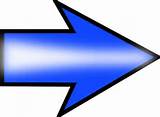Nolan
felt bewildered and betrayed by White's turning against
him, and was hurt by the virulence of the attack, particularly
coming from such an unexpected quarter. He had had no
inkling that there was anything amiss with their hitherto
close friendship.
(The London-based Australian critic Charles Osborne had
sent a copy of the book to Nolan in Sydney, seeking his
reaction. For the moment Nolan said nothing - in print.)
At the time Nolan read Flaws in the Glass in 1982,
he was in the process of painting his new series of works
based on Lawrence's Kangaroo.
For some time Nolan had been "illustrating"
themes derived from Australian culture and history, searching
for iconic figures, such as Ned Kelly, to represent or
symbolise them.
After reading Kangaroo he chose various scenes
from the novel to represent - to borrow Lawrence's famous
phrase - "the spirit of the place".
The first six of the eight pictures are lyrical, almost-pastoral
images.
In one, "Rainbow", Somers and Harriett are seen
walking along the beach at Thirroul. In "Picnic Falls"
the couple are dwarfed by the bush landscape around them.
"Moon" shows a bright yellow disc suspended
over Perth. "Heaven" shows the couple among
the wattle blossoms in the bush.
"Streamers" (see above) shows the Lawrences'
boat is leaving the wharf in Sydney, streamers still attached
to it side. "Chic" (also see above) depicts
the couple about to make love after a swim.
It now seems likely that these six works were painted
before Nolan read Flaws in the Glass - or at least
before it had time to sink into his consciousness.
The final two works, however, display a sharp change of
mood (perhaps analogous to the "sudden turning"
of Lawrence's "silvery freedom" in Kangaroo).
The cruellest was the diptych, which Nolan called "Nightmare".
He had been deeply moved by "The Nightmare"
chapter in Kangaroo (where the Somers/Lawrence
character is called up for army service and humiliated
by intrusive physical examinations).
However, the diptych which emerged from Nolan's pen and
brush in October 1982 went far beyond anything which Lawrence's
chapter could have evoked.
